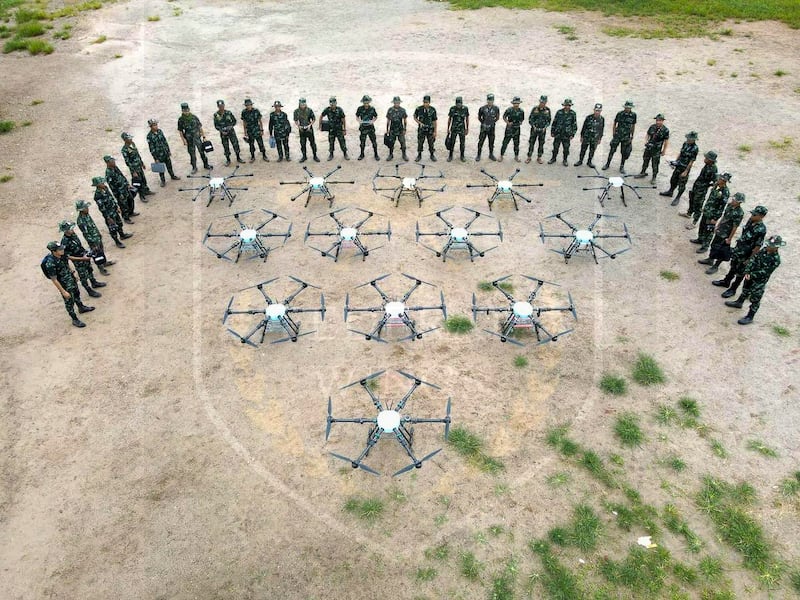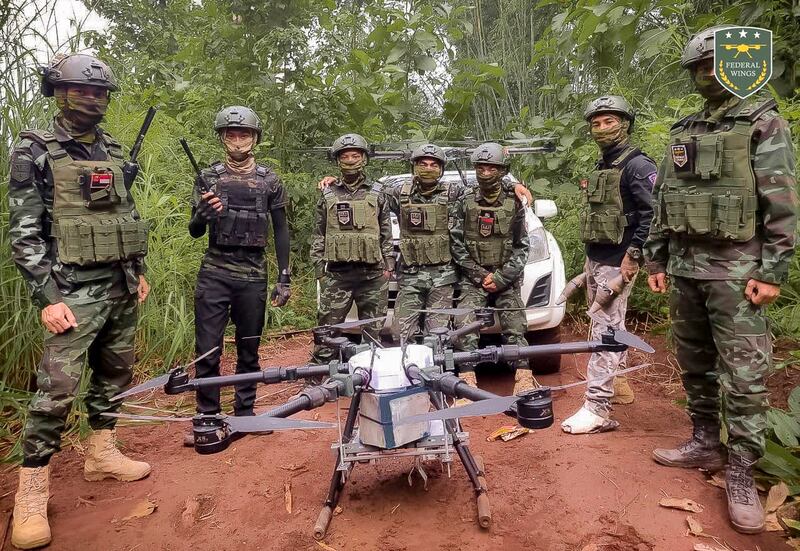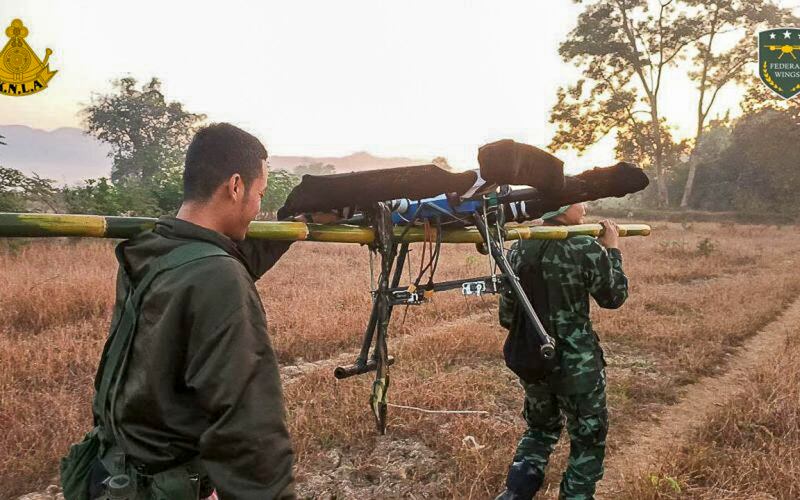Myanmar’s military is adding advanced Chinese drones to its arsenal and using them to attack its enemies with increasingly devastating effect, rebel groups say.
A recent investigation by RFA Burmese found that the military is now deploying more advanced, Chinese-built “first-person view” drones, equipped with special cameras that allow the controller to clearly observe their targets.
An official with the anti-junta Myingyan District Drone Strike Team said that the new CH-2 and CH-4 drones include six-bladed “hexacopters” that can take-off and land vertically.
“The quality of their equipment has improved, and the possible damage [they can inflict] has increased,” said the official, who spoke to RFA on condition of anonymity due to security concerns. “The military is now using advanced methodology.”
Rebel groups have also used drones to fight junta forces.
Since the military seized power from Myanmar’s democratically elected government in a February 2021 coup, and embarked on a nationwide offensive to solidify its rule, guerilla forces have embraced drones as a low-cost method to level the playing field against airstrikes and artillery.

In a commentary published by RFA earlier this month, Zachary Abuza, a professor at the National War College in Washington and an adjunct at Georgetown University, noted that the shadow National Unity Government, or NUG, and Myanmar's ethnic armies "have used modified hobby and crop dusting drones with incredible efficacy," including in an attack that purportedly wounded Soe Win, the deputy junta commander.
But he said that with the military experiencing a shortage of spare parts and regular servicing of its “overtaxed” air force, which has led to the crash of several aircraft, it is now looking to armed drones to bolster its air power.
“Evidence has surfaced that the military is already fielding more lethal drone-specific munitions, rather than relying on mortar shells,” Abuza said.
Casualties increasing
According to data gathered by RFA, in the first four months of 2024, junta drone attacks killed eight people and injured 26 others in Chin, Rakhine, Kayin and Shan states, as well as in Sagaing region.
Of the eight dead, three were members of local anti-junta forces, while the remaining five – including one child – were civilians. All 26 of those injured were civilians.
In the last four months of 2023, junta drone attacks injured four civilians – including one child – in Rakhine and Kayah states, RFA data showed.
The pro-junta People’s Media, based in Myanmar’s capital Naypyitaw, reported on April 25 that the military had deployed Chinese-built CH-4 drones in an offensive it launched to recapture the Kayin state townships of Kawkareik, Thingannyinaung and Myawaddy.
In a report published May 4, it said the junta had officially formed a drone force, and was receiving technical training from Russia, India and China.

First manufactured in 2013, the larger CH-4 drone is equipped with missiles and can be deployed on reconnaissance and combat missions for several hours at a time, according to Captain Ze Thu Aung, who left Myanmar’s air force to join the Civil Disobedience Movement of civil servants boycotting the junta.
But the CH-4 has its disadvantages, said the former officer, who now advises anti-junta forces.
“It’s big and requires a runway,” he said. “The military has largely refrained from using this drone. Instead, they mostly use the same type of drones used by the rebel forces, as they don’t need a runway and can be carried easily.”
Attempts by RFA to contact junta spokesperson Major General Zaw Min Tun for further information on the military’s use of drones went unanswered.
Weaponizing drones
Salai Peter Thang, the vice president of the ethnic Chin National Defense Force, told RFA that the military always had drones at its disposal, but mostly used them for reconnaissance.
“The junta troops used drones even before we [rebel forces] could,” he said. “But they didn’t use bombs, which they’ve started using recently.”
He said that the military now deploys drones to conduct “limited airstrikes” as reinforcement for its ground troops.
Two members of the ethnic Chinland Defense Force - Zophei and one member of the Zophai CDF were killed in junta drone attacks during fighting in Chin state’s Tedim township and Sagaing region’s Kalay township on April 27.

In both attacks, junta troops also suffered casualties from rebel drones.
A former military official, who also declined to be named, told RFA that as the number of drones used by both the military and rebel forces increases and technology improves, so will the number of casualties and extent of damage.
“At present, both sides are suffering casualties,” he said. “Victory will depend on their ability to endure.”
Translated by Aung Naing. Edited by Joshua Lipes and Malcolm Foster.
